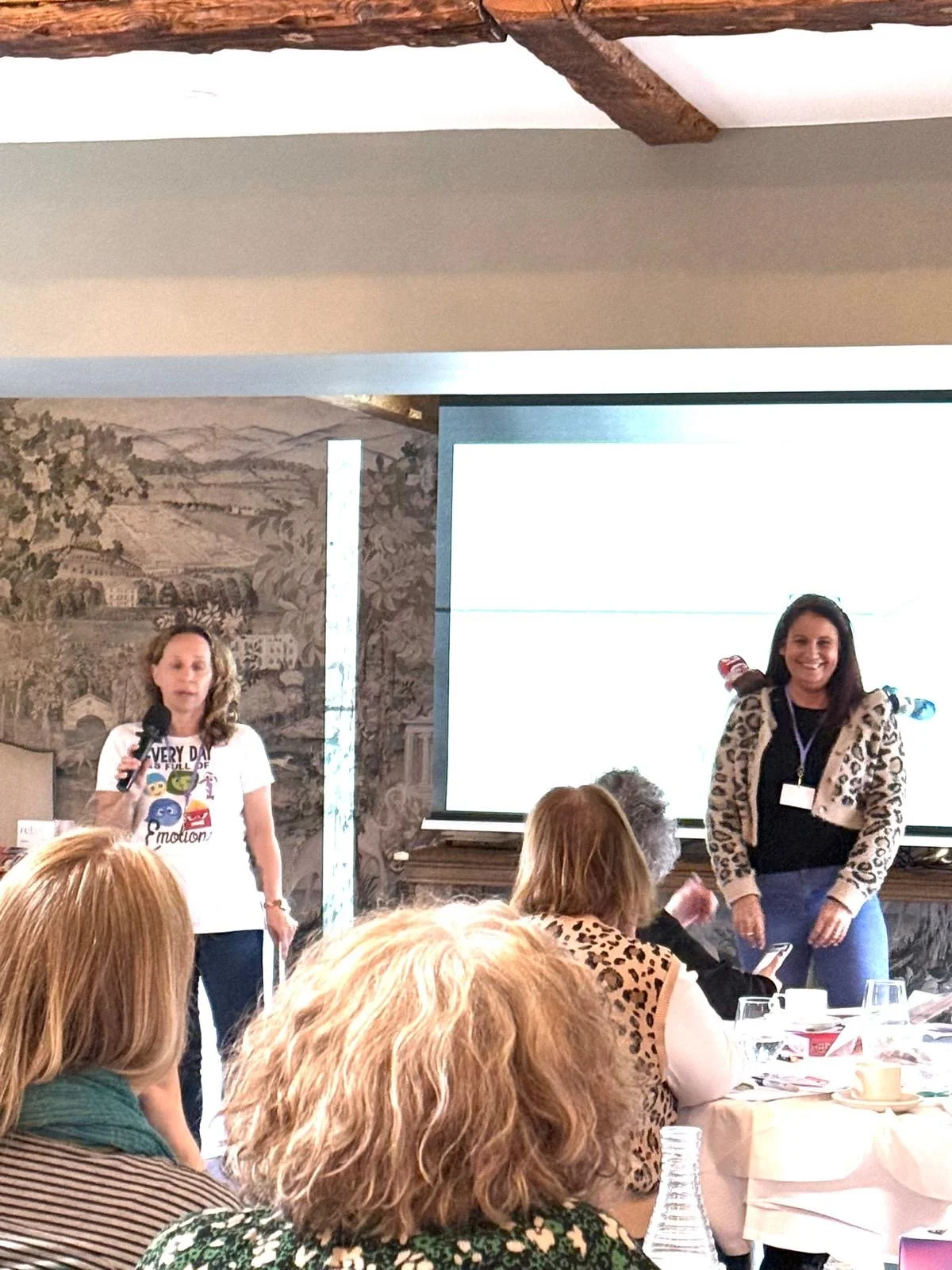Embracing Our Inner Artist
A few days up north with the Creative Counsellors group was not just about learning new tools—though there were plenty of those! It was about connection, creativity, and allowing ourselves to feel in ways that we often don’t get the chance to. If there’s one thing I’ve learned, it’s that everyone is artistic. If you can make a mark on a bit of paper, you’re already creating. Simple as that.
In our time away, we explored the deep stuff—our own emotions, the messy, complicated ones that often get shoved into the corners of our minds. And yes, we did that through art. But not the kind of art you think of when you picture a pristine canvas and perfectly executed brushstrokes. No, this was raw, real, heart-led art. Forget perfection, forget technique. It’s about expression—letting your heart and gut guide the way, leaving the overthinking behind.
We were inspired by Angie Dulwich and the Inside Out movie, which is a brilliant metaphor for how we process emotions. Just like the characters, we all have a team of emotions inside us, trying to make sense of the chaos in our heads. Joy, Sadness, Anger, Fear, and Disgust—they all deserve to be felt. Working with these emotions is about making space for them, acknowledging their existence, and not pushing them away. The real magic happens when we start to embrace them with creativity.
That’s why I love using creative approaches in therapy. Art, music, and even sand trays are tools that invite people to explore emotions and stories that words just can’t capture. It’s like an invitation to access a deeper part of ourselves, the part where feelings live—outside of the head and into the heart. You don’t need to be ‘good’ at art to benefit from this work.
As a collective, we sat down with Honorata Chorazy-Przybysz and some basic materials—pens, paper, watercolour, oil pastels, and markers—and were told to let go of any ideas of what art ‘should’ be. We were to draw our feelings, without thinking. What’s amazing is how easily it opens up space for expression. Just make a mark. It doesn’t matter what it looks like. It’s not about being perfect; it’s about being authentic. It’s about tapping into the heart and gut, not the head.
And let me tell you, it’s one of the most freeing feelings. No one judged our scribbles or shapes. They weren’t meant to be ‘art’ in the traditional sense—they were simply reflections of our inner worlds. And this freedom to express through creativity is why I bring this approach into my counselling practice. Art doesn’t need to be pretty—it just needs to be real.
We also talked about our emotional landscapes, just like the Inside Out characters. How sometimes we feel like a team of emotions all at once—each pulling us in different directions, trying to be seen. And that’s okay. Sometimes the process of just expressing it can be the thing that brings you the clarity you need. That’s when healing begins. You don’t have to “get it right” in therapy. You just have to show up.
As I look back on the trip, I’m reminded of how important it is to keep learning, keep connecting, and keep playing with creative tools that help us open up emotionally. Because when we use creativity in therapy, we’re not just making marks on paper—we’re making progress. Sometimes, you need to step away from your thinking brain and dive into the feelings that live beneath.
So, if you’re in therapy with me, or thinking about starting, know this: you don’t need to be an artist. You just need to be willing to let go of the head and trust the heart. The emotions are there, and they’ll find their way out—sometimes in unexpected ways, sometimes through a piece of paper that’s covered in scribbles, and sometimes with a deep, satisfying sigh of relief.
Stay creative, stay curious, and most importantly—stay connected to your true self.
Take gentle care of yourself
Louise x






